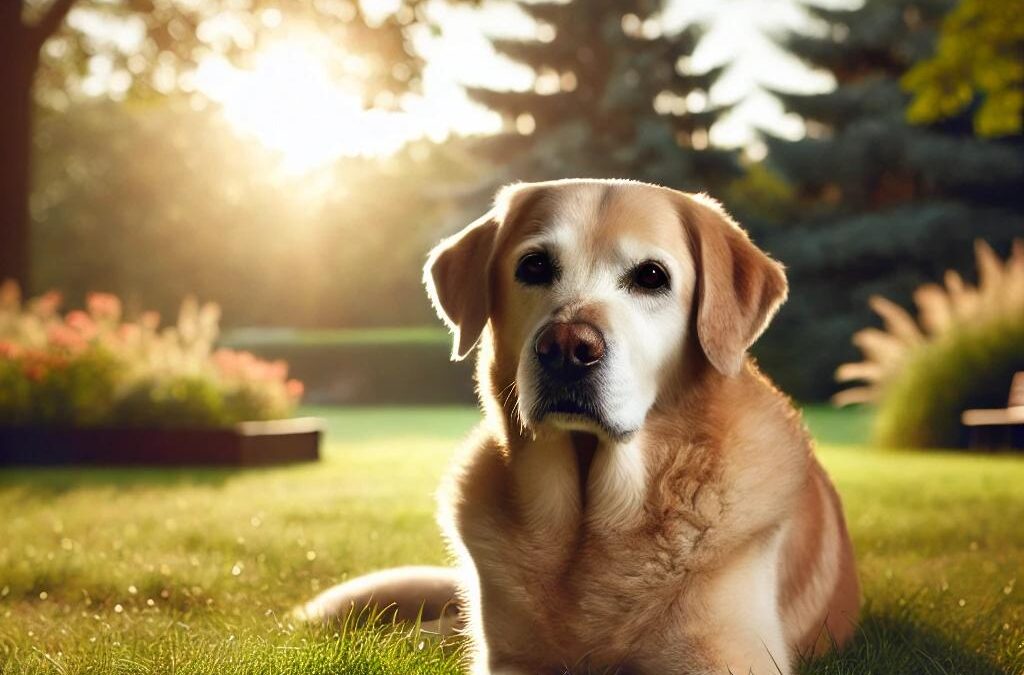
經過 TCMVET | 2024 年 11 月 1 日 | 狗癌症和腫瘤
腺癌 是一種惡性腫瘤,始於狗內臟的腺體和上皮組織。雖然這種癌症可以影響身體的各個部位,但它通常會侵犯身體的各個部位。 胃腸系統 (GI),腫瘤發現於 胃、小腸、大腸和直腸。通常影響年長的狗, 腺癌 沒有特定的品種傾向,更常見於雄性狗。不幸的是,它經常帶有一個 預後不良,因此早期發現和主動護理對於改善狗的生活品質至關重要。
辨識狗腺癌的症狀
腺癌很難被發現,因為早期症狀通常類似於常見的胃腸道問題。然而,隨著時間的推移持續存在或惡化的跡象可能表示病情嚴重,例如 腺癌。需要注意的主要症狀包括:
- 減肥 和缺乏食慾
- 嘔吐 或腹瀉
- 昏睡 和活動量降低
- 血便或 黑色、柏油樣糞便
- 腹部不適或疼痛
業主應密切注意任何持續的跡象 腸胃不適 對於他們的狗,尤其是老年寵物,因為早期介入可以對治療選擇和結果產生重大影響。
腺癌的診斷和治療選擇
診斷 腺癌的診斷通常從身體檢查開始,然後進行各種診斷測試,包括 血液工作, X光檢查, 超音波,並且可能 內視鏡檢查 或活檢。這些程序有助於確定癌症的位置和範圍,並為最佳治療方案提供資訊。
治療方案可能包括:
- 手術:在某些情況下,切除腫瘤和周圍組織的手術可能有效。然而,癌症可能已經擴散到其他部位,限制了單純手術的效果。
- 化療:如果癌症擴散,這通常與手術結合或作為獨立治療。儘管化療可能無法治癒癌症,但它可以減緩其進展並提高生活品質。
- 放射治療:雖然對於胃腸道癌症較不常見,但可能建議針對特定區域的腫瘤進行放射治療。
- 支持性護理:控制疼痛和其他症狀,以及調整狗的飲食以對胃腸道系統溫和,可以提高舒適度和整體生活品質。
腺癌的治療:護理與生活品質
自從 狗的腺癌 通常預後不佳,因此關注舒適度和生活品質變得至關重要。提供一個 易消化、營養豐富的飲食 可以幫助支持整體健康,並監測您的狗 體重和能量水平 可以幫助隨著時間的推移調整護理需求。
對於患有晚期腺癌的狗, 安寧療護 也許是最慈悲的選擇。這種方法的重點是疼痛管理並透過藥物和生活方式調整確保舒適。
提高認識並支持患有腺癌的狗
儘管腺癌很罕見,但狗主人必須了解其體徵和症狀,尤其是隨著狗的年齡增長。定期去看獸醫並及時注意任何不適或痛苦的跡象對於早期發現這種癌症至關重要。
總之, 腺癌 在狗身上,這是一種嚴重且通常侵襲性的癌症,前景充滿挑戰。然而,透過早期診斷、一系列治療方案和支持性護理,有可能改善受影響狗的生活品質。

經過 TCMVET | 2024 年 11 月 1 日 | 狗癌症和腫瘤
狗的消化道腫瘤是一種複雜的疾病,需要詳細的方法來準確診斷和治療。早期發現這些腫瘤對於獲得最佳預後至關重要,獸醫使用多種診斷方法來確定腫瘤的類型和範圍。以下概述了診斷狗狗消化道腫瘤的主要步驟。
初步檢查和病史
您的獸醫將首先進行徹底的體檢,考慮您的狗的病史、症狀以及任何可能導致疾病的相關事件。獸醫將首先評估是否有異物、發炎性腸道疾病、寄生蟲感染或胰臟炎可能是原因。排除這些情況有助於關注是否有腫瘤。
區分腫瘤類型
一旦懷疑有腫瘤,獸醫將努力將其與其他類型(例如癌性腺腫瘤)區分開來。多種類型的癌症都會影響消化系統,包括:
- 平滑肌肉瘤
這是一種從消化道內平滑肌發展而來的癌症,通常會導致阻塞或胃腸道症狀。
- 淋巴瘤
淋巴瘤是一種起源於淋巴細胞(白血球的一種)的癌症,可在消化系統的各個部位形成實體腫瘤。
識別腫瘤類型對於確定適當的治療計劃和預期預後至關重要。
診斷測試和影像學
為了準確診斷消化道腫瘤,獸醫依靠多種診斷測試,包括:
- Blood Tests
完整的血液分析,包括化學血液分析、全血細胞計數和尿液分析,可以深入了解您的狗的整體健康狀況,並幫助檢測與癌症相關的異常情況。
- 腹部超音波檢查
超音波可以顯示胃或腸壁的任何增厚情況,這可能表示有腫瘤。胃平滑肌瘤是一種良性腫瘤,常見於食道胃交界處,即食道與胃的交界處。
- 對比研究
在這項測試中,獸醫會給狗注射一定劑量的液體鋇,在 X 光片上可以看到。在各個階段拍攝 X 光影像,以追蹤鋇通過消化道的過程,幫助識別任何佔據空間的腫塊。這對於診斷胃、腸和直腸腫瘤特別有幫助。
- 內視鏡檢查
上消化道內視鏡檢查是將帶有攝影機的柔性管插入胃腸道,以便進行直接目視檢查。內視鏡還具有用於收集組織和液體樣本的工具,以便進行活檢以確認診斷。
- 活檢
如果懷疑有腫瘤,獸醫可能會採集腫塊的黏膜切片或組織樣本。對於表面腫瘤,這種技術通常是有效的。然而,對於深部腫瘤,可能需要更具侵入性的手術活檢才能獲得可靠的診斷。
準確診斷的重要性
準確診斷腫瘤對於確定腫瘤是良性還是惡性至關重要,這將影響治療選擇。了解腫瘤的類型、大小和位置可以讓獸醫制定有針對性的治療計劃,從而增加改善狗的生活品質和結果的機會。

經過 TCMVET | 2024 年 11 月 1 日 | 狗癌症和腫瘤
血管肉瘤是一種嚴重的侵襲性癌症,會影響狗,並且很容易擴散到其他器官。本文概述了不同類型血管肉瘤的預後,並提供了可能改善狗的生活品質的護理策略的見解。
血管肉瘤的種類及其預後
- 脾血管肉瘤
脾臟血管肉瘤是最常見和最具侵襲性的類型之一,發生在脾臟。如果不進行治療,預期壽命通常僅限於幾週。手術切除脾臟可將存活期延長至約 2-3 個月。與化療結合時,有些狗可以存活長達 9 個月。然而,長期存活的情況很少見,只有不到 10% 能存活超過一年。
- 心臟血管肉瘤
這種類型的血管肉瘤會影響心臟,使其難以治療,通常會導致嚴重的預後。大多數狗在不接受治療的情況下只能活幾天到幾週。透過安寧療護和化療,存活期可能延長至 4 個月左右。然而,心臟血管肉瘤通常無法治愈,支持治療的重點是狗的舒適度。
- 皮膚血管肉瘤
皮膚血管肉瘤影響皮膚,預後相對較好。由紫外線照射引起的腫瘤轉移的可能性較小,如果及時切除這些腫瘤,狗可能會存活數年。密切監測紫外線照射區域至關重要,因為可能會發生復發,建議及時切除新腫瘤。
- 皮下血管肉瘤
皮下血管肉瘤位於皮膚正下方,其預後比皮膚類型較差,因為它可以擴散到更深的組織。即使進行治療,存活期也可能只能延長幾個月,這取決於腫瘤的範圍和對治療的反應。
治療選擇和護理計劃
對於血管肉瘤,治療可以包括手術、化療或多種方法的組合。每種方法都有特定的益處,並根據腫瘤的類型、位置和進展進行選擇。
- 手術切除
手術可能是治療脾臟和皮膚腫瘤的一種選擇。對於脾血管肉瘤,切除脾臟是一種常見的方法,通常隨後進行化療以降低復發風險。
- 化療
化療可以幫助減緩腫瘤的擴散並提高存活時間,特別是對於脾臟和心臟血管肉瘤等侵襲性類型。然而,與獸醫一起權衡化療的益處和潛在副作用至關重要。
- 安寧療護
安寧療護旨在提高患有晚期血管肉瘤的狗的舒適度並控制症狀。這可能涉及疼痛管理、支持療法和生活方式調整,以幫助狗狗享受更好的生活品質。
監控和跟進
定期與獸醫進行追蹤對於追蹤血管肉瘤的進展至關重要。這些就診可能包括血液檢查和診斷影像,以檢測任何變化或潛在的轉移。密切注意您的狗的健康並與您的獸醫溝通將有助於根據狗的需求量身定制護理。
提高生活品質
雖然血管肉瘤的預後仍然具有挑戰性,但寵物主人可以採取積極措施來提高狗的生活品質。均衡的營養、溫和的運動和創造平靜的環境可以對狗的健康產生積極影響。與獸醫密切合作,隨著疾病的進展調整治療計劃,是確保狗狗盡可能保持舒適的關鍵。

經過 TCMVET | 2024 年 11 月 1 日 | 狗癌症和腫瘤
診斷狗的皮膚腫瘤通常從細針抽吸 (FNA) 程序開始。這種微創測試允許獸醫從可疑生長物中收集少量細胞樣本。然而,有些腫瘤,尤其是那些充滿血液的腫瘤,如血管肉瘤,可能需要額外的檢查才能明確診斷。
了解細針穿刺 (FNA) 程序
當懷疑皮膚腫瘤時,FNA 測試通常是第一個診斷步驟。獸醫使用細針從腫瘤中提取小細胞樣本,然後將其放在玻片上並在顯微鏡下檢查。 FNA 的優點是它是一種快速、低風險的手術,可以立即了解腫瘤的性質。
然而,並非所有腫瘤都可以透過 FNA 輕鬆診斷。例如,血管肉瘤是一種充滿血液的腫瘤,通常會產生非診斷結果。這些樣本主要由血液組成,幾乎沒有需要分析的腫瘤細胞,這使得獸醫很難僅從細針穿刺活檢中得出明確的結論。
當需要進一步測試時:活檢的作用
當 FNA 無法提供足夠的資訊時,特別是在疑似血管肉瘤的情況下,可能需要進行手術切片檢查。活檢涉及從腫瘤中取出較大的組織樣本,然後將其送往實驗室進行詳細分析。與細針穿刺活檢不同,活檢可以讓病理學家更徹底地檢查腫瘤的細胞結構,從而提供更準確的診斷。這一額外步驟對於識別皮膚或皮下血管肉瘤等侵襲性腫瘤至關重要。
為什麼準確診斷很重要
確定皮膚腫瘤是良性還是惡性對於指導治療至關重要。良性腫瘤可能只需要監測,而惡性腫瘤通常需要及時治療。例如,血管肉瘤具有侵襲性,如果不及時治療,可能會擴散到其他器官。透過準確診斷腫瘤類型,獸醫可以製定有針對性的治療計劃,從而改善狗的生活品質並有可能延長生存時間。
了解狗狗皮膚腫瘤的診斷過程可以幫助寵物主人對其寵物的健康做出明智的決定。雖然 FNA 是有用的第一步,但有時可能需要進行手術活檢才能做出明確診斷,尤其是對於血管肉瘤等具有挑戰性的腫瘤類型。如果您發現狗的皮膚上有任何異常生長,請儘早諮詢您的獸醫進行評估。

經過 TCMVET | 2024 年 11 月 1 日 | 狗癌症和腫瘤
當狗被診斷出患有心臟腫瘤時,持續監測變得至關重要,特別是如果阿黴素等化療藥物是治療的一部分。定期追蹤檢查有助於確保及早發現任何不良影響並進行有效管理,以支持您的狗的生活品質。
心臟超音波在治療過程中的重要性
您的獸醫可能會建議連續進行心臟超音波檢查,作為您的狗的後續護理的一部分。這些超音波是非侵入性的,可以提供有關您的狗的心臟健康的重要資訊。它們允許獸醫團隊監測腫瘤的狀態,評估心肌的功能,並檢測藥物毒性的任何早期跡象,特別是在開了阿黴素的情況下。
阿黴素是一種強效化療劑,通常用於治療侵襲性癌症。然而,這種藥物的一個已知副作用是它可能會損害心肌。透過超音波及早發現任何心臟變化可以幫助獸醫及時調整治療計劃,以最大限度地降低風險。
胸部 X 光檢查在監測癌症擴散的作用
除了心臟超音波檢查外,胸部 X 光檢查是後續護理的另一個重要部分。每次就診期間,您的獸醫都會進行胸部 X 光檢查,以評估腫瘤是否擴散到心臟以外。這些影像有助於及早識別轉移,以便及時介入。
惡性腫瘤的轉移風險較高,因此定期成像是維持狗狗健康的關鍵組成部分。儘早發現身體其他部位的傳播可以提供更多的治療選擇,並有可能延長您與寵物相處的時間。
阿黴素對心臟健康的影響
雖然阿黴素對多種癌症有效,但由於其可能削弱或損害心肌組織,因此其使用需要密切監測。定期超音波檢查有助於獸醫團隊追蹤任何早期毒性跡象,這對於管理劑量或考慮替代治療方案特別有幫助。
了解惡性心臟腫瘤的預後
由於這些腫瘤的侵襲性和轉移的可能性,患有惡性心肌腫瘤的狗的預後通常很差。儘管如此,透過持續的隨訪和及早發現任何併發症,您可以與您的獸醫合作,為您的狗提供最好的護理。
在治療期間支持您的狗的健康
除了醫療追蹤外,透過均衡的營養、適度的運動和壓力管理為您的狗保持健康的生活方式可以幫助增強它們在治療期間的恢復能力。與您的獸醫溝通對於了解您的狗的健康狀況的任何變化並根據需要調整護理至關重要。

經過 TCMVET | 2024 年 11 月 1 日 | 狗癌症和腫瘤
狗的心臟腫瘤雖然不常見,但寵物主人應該注意,尤其是隨著狗的年齡增長。這些腫瘤形成於心臟內或心臟周圍,其類型和嚴重程度各不相同。了解不同的腫瘤類型及其潛在影響可以幫助寵物主人及時尋求獸醫支持並有效管理狗的健康。
狗的常見心臟腫瘤類型
心臟腫瘤可分為 原發性腫瘤,在心臟本身中發展,並且 繼發性腫瘤,從身體的其他部位傳播到心臟。
- 原發性心臟腫瘤
原發性心臟腫瘤直接起源於心臟結構內,通常起源於心肌、血管或纖維組織。- 血管肉瘤
這是一種起源於心臟血管的快速生長的惡性腫瘤。它具有侵襲性並且具有很高的轉移潛力,通常需要緊急幹預。
- 纖維瘤和纖維肉瘤
由纖維組織發展而來的腫瘤,例如在心臟瓣膜中發現的腫瘤,如果是良性的,則稱為纖維瘤;如果是惡性的,則稱為纖維肉瘤。纖維肉瘤更具侵襲性,可能擴散到周圍器官。
- 黏液瘤和黏液肉瘤
黏液瘤是在心臟上腔(心房)發現的良性腫瘤。當惡性時,它們被稱為黏液肉瘤,並且擴散的可能性更高,影響狗的整體心臟功能。
- 橫紋肌肉瘤
橫紋肌肉瘤是一種起源於心臟骨骼肌組織的罕見腫瘤,通常是惡性的,可引起嚴重的心臟併發症。
- 繼發性心臟腫瘤
繼發性心臟腫瘤經由其他部位的轉移到達心臟。這些包括:- 淋巴瘤
淋巴瘤是一種源自淋巴結的惡性腫瘤,最終可能會影響心臟,使心臟健康變得複雜。
- 神經纖維瘤
源自神經纖維的良性腫瘤,神經纖維瘤可以影響心臟組織而不擴散,儘管它們仍然可以根據其位置破壞心臟功能。
- 顆粒細胞瘤
這些腫瘤可以是良性的,也可以是惡性的,通常會繼發影響心臟。它們的起源尚不清楚,因此它們在體內的行為難以預測。
- 骨肉瘤
骨肉瘤等惡性骨腫瘤可以轉移到心臟,由於其侵襲性擴散而造成嚴重的健康風險。
認識症狀
由於狗的心臟腫瘤的內部性質,有時在早期階段症狀輕微,因此很難檢測到。常見症狀包括嗜睡、呼吸困難、昏厥和心律不整。由於這些症狀與其他病症重疊,因此需要獸醫評估才能準確診斷。
診斷和護理技巧
診斷通常涉及先進的影像技術,例如超音波、MRI 或 CT 掃描來評估心臟狀況。也可能需要進行血液檢查和組織活檢來確認腫瘤類型。
照顧患有心臟腫瘤的狗需要定期監測和支持護理,特別是在手術、放療或化療等治療方案不可行的情況下。飲食支持、輕度運動和平靜的環境可以幫助改善狗狗的生活品質。
患有心臟腫瘤的狗的前景取決於腫瘤類型、位置和整體健康狀況等因素。雖然有些良性腫瘤無需幹預即可治療,但惡性腫瘤的預後往往很謹慎。儘管如此,早期發現和支持性護理可以延長狗的舒適度和壽命。






